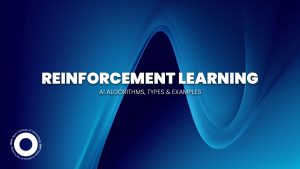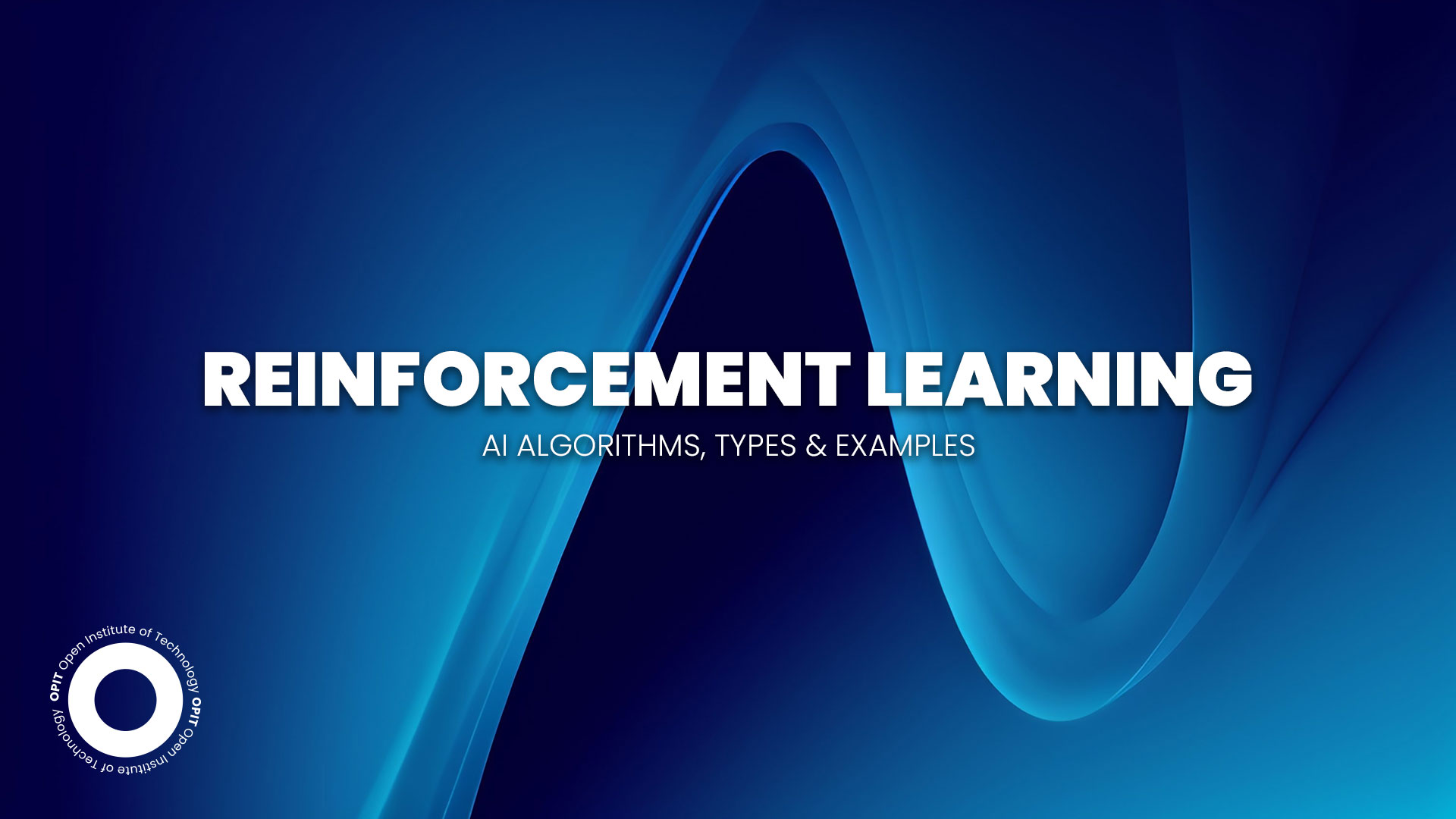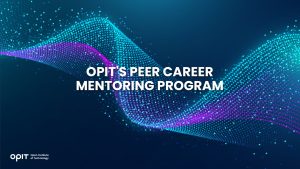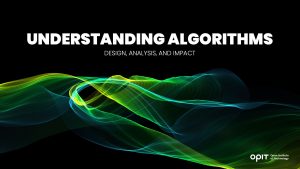

Reinforcement learning is a very useful (and currently popular) subtype of machine learning and artificial intelligence. It is based on the principle that agents, when placed in an interactive environment, can learn from their actions via rewards associated with the actions, and improve the time to achieve their goal.
In this article, we’ll explore the fundamental concepts of reinforcement learning and discuss its key components, types, and applications.
Definition of Reinforcement Learning
We can define reinforcement learning as a machine learning technique involving an agent who needs to decide which actions it needs to do to perform a task that has been assigned to it most effectively. For this, rewards are assigned to the different actions that the agent can take at different situations or states of the environment. Initially, the agent has no idea about the best or correct actions. Using reinforcement learning, it explores its action choices via trial and error and figures out the best set of actions for completing its assigned task.
The basic idea behind a reinforcement learning agent is to learn from experience. Just like humans learn lessons from their past successes and mistakes, reinforcement learning agents do the same – when they do something “good” they get a reward, but, if they do something “bad”, they get penalized. The reward reinforces the good actions while the penalty avoids the bad ones.
Reinforcement learning requires several key components:
- Agent – This is the “who” or the subject of the process, which performs different actions to perform a task that has been assigned to it.
- Environment – This is the “where” or a situation in which the agent is placed.
- Actions – This is the “what” or the steps an agent needs to take to reach the goal.
- Rewards – This is the feedback an agent receives after performing an action.
Before we dig deep into the technicalities, let’s warm up with a real-life example. Reinforcement isn’t new, and we’ve used it for different purposes for centuries. One of the most basic examples is dog training.
Let’s say you’re in a park, trying to teach your dog to fetch a ball. In this case, the dog is the agent, and the park is the environment. Once you throw the ball, the dog will run to catch it, and that’s the action part. When he brings the ball back to you and releases it, he’ll get a reward (a treat). Since he got a reward, the dog will understand that his actions were appropriate and will repeat them in the future. If the dog doesn’t bring the ball back, he may get some “punishment” – you may ignore him or say “No!” After a few attempts (or more than a few, depending on how stubborn your dog is), the dog will fetch the ball with ease.
We can say that the reinforcement learning process has three steps:
- Interaction
- Learning
- Decision-making
Types of Reinforcement Learning
There are two types of reinforcement learning: model-based and model-free.
Model-Based Reinforcement Learning
With model-based reinforcement learning (RL), there’s a model that an agent uses to create additional experiences. Think of this model as a mental image that the agent can analyze to assess whether particular strategies could work.
Some of the advantages of this RL type are:
- It doesn’t need a lot of samples.
- It can save time.
- It offers a safe environment for testing and exploration.
The potential drawbacks are:
- Its performance relies on the model. If the model isn’t good, the performance won’t be good either.
- It’s quite complex.
Model-Free Reinforcement Learning
In this case, an agent doesn’t rely on a model. Instead, the basis for its actions lies in direct interactions with the environment. An agent tries different scenarios and tests whether they’re successful. If yes, the agent will keep repeating them. If not, it will try another scenario until it finds the right one.
What are the advantages of model-free reinforcement learning?
- It doesn’t depend on a model’s accuracy.
- It’s not as computationally complex as model-based RL.
- It’s often better for real-life situations.
Some of the drawbacks are:
- It requires more exploration, so it can be more time-consuming.
- It can be dangerous because it relies on real-life interactions.
Model-Based vs. Model-Free Reinforcement Learning: Example
Understanding model-based and model-free RL can be challenging because they often seem too complex and abstract. We’ll try to make the concepts easier to understand through a real-life example.
Let’s say you have two soccer teams that have never played each other before. Therefore, neither of the teams knows what to expect. At the beginning of the match, Team A tries different strategies to see whether they can score a goal. When they find a strategy that works, they’ll keep using it to score more goals. This is model-free reinforcement learning.
On the other hand, Team B came prepared. They spent hours investigating strategies and examining the opponent. The players came up with tactics based on their interpretation of how Team A will play. This is model-based reinforcement learning.
Who will be more successful? There’s no way to tell. Team B may be more successful in the beginning because they have previous knowledge. But Team A can catch up quickly, especially if they use the right tactics from the start.
Reinforcement Learning Algorithms
A reinforcement learning algorithm specifies how an agent learns suitable actions from the rewards. RL algorithms are divided into two categories: value-based and policy gradient-based.
Value-Based Algorithms
Value-based algorithms learn the value at each state of the environment, where the value of a state is given by the expected rewards to complete the task while starting from that state.
Q-Learning
This model-free, off-policy RL algorithm focuses on providing guidelines to the agent on what actions to take and under what circumstances to win the reward. The algorithm uses Q-tables in which it calculates the potential rewards for different state-action pairs in the environment. The table contains Q-values that get updated after each action during the agent’s training. During execution, the agent goes back to this table to see which actions have the best value.
Deep Q-Networks (DQN)
Deep Q-networks, or deep q-learning, operate similarly to q-learning. The main difference is that the algorithm in this case is based on neural networks.
SARSA
The acronym stands for state-action-reward-state-action. SARSA is an on-policy RL algorithm that uses the current action from the current policy to learn the value.
Policy-Based Algorithms
These algorithms directly update the policy to maximize the reward. There are different policy gradient-based algorithms: REINFORCE, proximal policy optimization, trust region policy optimization, actor-critic algorithms, advantage actor-critic, deep deterministic policy gradient (DDPG), and twin-delayed DDPG.
Examples of Reinforcement Learning Applications
The advantages of reinforcement learning have been recognized in many spheres. Here are several concrete applications of RL.
Robotics and Automation
With RL, robotic arms can be trained to perform human-like tasks. Robotic arms can give you a hand in warehouse management, packaging, quality testing, defect inspection, and many other aspects.
Another notable role of RL lies in automation, and self-driving cars are an excellent example. They’re introduced to different situations through which they learn how to behave in specific circumstances and offer better performance.
Gaming and Entertainment
Gaming and entertainment industries certainly benefit from RL in many ways. From AlphaGo (the first program that has beaten a human in the board game Go) to video games AI, RL offers limitless possibilities.
Finance and Trading
RL can optimize and improve trading strategies, help with portfolio management, minimize risks that come with running a business, and maximize profit.
Healthcare and Medicine
RL can help healthcare workers customize the best treatment plan for their patients, focusing on personalization. It can also play a major role in drug discovery and testing, allowing the entire sector to get one step closer to curing patients quickly and efficiently.
Basics for Implementing Reinforcement Learning
The success of reinforcement learning in a specific area depends on many factors.
First, you need to analyze a specific situation and see which RL algorithm suits it. Your job doesn’t end there; now you need to define the environment and the agent and figure out the right reward system. Without them, RL doesn’t exist. Next, allow the agent to put its detective cap on and explore new features, but ensure it uses the existing knowledge adequately (strike the right balance between exploration and exploitation). Since RL changes rapidly, you want to keep your model updated. Examine it every now and then to see what you can tweak to keep your model in top shape.
Explore the World of Possibilities With Reinforcement Learning
Reinforcement learning goes hand-in-hand with the development and modernization of many industries. We’ve been witnesses to the incredible things RL can achieve when used correctly, and the future looks even better. Hop in on the RL train and immerse yourself in this fascinating world.
Related posts

Source:
- Raconteur, published on November 06th, 2025
Many firms have conducted successful Artificial Intelligence (AI) pilot projects, but scaling them across departments and workflows remains a challenge. Inference costs, data silos, talent gaps and poor alignment with business strategy are just some of the issues that leave organisations trapped in pilot purgatory. This inability to scale successful experiments means AI’s potential for improving enterprise efficiency, decision-making and innovation isn’t fully realised. So what’s the solution?
Although it’s not a magic bullet, an AI operating model is really the foundation for scaling pilot projects up to enterprise-wide deployments. Essentially it’s a structured framework that defines how the organisation develops, deploys and governs AI. By bringing together infrastructure, data, people, and governance in a flexible and secure way, it ensures that AI delivers value at scale while remaining ethical and compliant.
“A successful AI proof-of-concept is like building a single race car that can go fast,” says Professor Yu Xiong, chair of business analytics at the UK-based Surrey Business School. “An efficient AI technology operations model, however, is the entire system – the processes, tools, and team structures – for continuously manufacturing, maintaining, and safely operating an entire fleet of cars.”
But while the importance of this framework is clear, how should enterprises establish and embed it?
“It begins with a clear strategy that defines objectives, desired outcomes, and measurable success criteria, such as model performance, bias detection, and regulatory compliance metrics,” says Professor Azadeh Haratiannezhadi, co-founder of generative AI company Taktify and professor of generative AI in cybersecurity at OPIT – the Open Institute of Technology.
Platforms, tools and MLOps pipelines that enable models to be deployed, monitored and scaled in a safe and efficient way are also essential in practical terms.
“Tools and infrastructure must also be selected with transparency, cost, and governance in mind,” says Efrain Ruh, continental chief technology officer for Europe at Digitate. “Crucially, organisations need to continuously monitor the evolving AI landscape and adapt their models to new capabilities and market offerings.”
An open approach
The most effective AI operating models are also founded on openness, interoperability and modularity. Open source platforms and tools provide greater control over data, deployment environments and costs, for example. These characteristics can help enterprises to avoid vendor lock-in, successfully align AI to business culture and values, and embed it safely into cross-department workflows.
“Modularity and platformisation…avoids building isolated ‘silos’ for each project,” explains professor Xiong. “Instead, it provides a shared, reusable ‘AI platform’ that integrates toolchains for data preparation, model training, deployment, monitoring, and retraining. This drastically improves efficiency and reduces the cost of redundant work.”
A strong data strategy is equally vital for ensuring high-quality performance and reducing bias. Ideally, the AI operating model should be cloud and LLM agnostic too.
“This allows organisations to coordinate and orchestrate AI agents from various sources, whether that’s internal or 3rd party,” says Babak Hodjat, global chief technology officer of AI at Cognizant. “The interoperability also means businesses can adopt an agile iterative process for AI projects that is guided by measuring efficiency, productivity, and quality gains, while guaranteeing trust and safety are built into all elements of design and implementation.”
A robust AI operating model should feature clear objectives for compliance, security and data privacy, as well as accountability structures. Richard Corbridge, chief information officer of Segro, advises organisations to: “Start small with well-scoped pilots that solve real pain points, then bake in repeatable patterns, data contracts, test harnesses, explainability checks and rollback plans, so learning can be scaled without multiplying risk. If you don’t codify how models are approved, deployed, monitored and retired, you won’t get past pilot purgatory.”
Of course, technology alone can’t drive successful AI adoption at scale: the right skills and culture are also essential for embedding AI across the enterprise.
“Multidisciplinary teams that combine technical expertise in AI, security, and governance with deep business knowledge create a foundation for sustainable adoption,” says Professor Haratiannezhadi. “Ongoing training ensures staff acquire advanced AI skills while understanding associated risks and responsibilities.”
Ultimately, an AI operating model is the playbook that enables an enterprise to use AI responsibly and effectively at scale. By drawing together governance, technological infrastructure, cultural change and open collaboration, it supports the shift from isolated experiments to the kind of sustainable AI capability that can drive competitive advantage.
In other words, it’s the foundation for turning ambition into reality, and finally escaping pilot purgatory for good.

The Open Institute of Technology (OPIT) is the perfect place for those looking to master the core skills and gain the fundamental knowledge they need to enter the exciting and dynamic environment of the tech industry. While OPIT’s various degrees and courses unlock the doors to numerous careers, students may not know exactly which line of work they wish to enter, or how, exactly, to take the next steps.
That’s why, as well as providing exceptional online education in fields like Responsible AI, Computer Science, and Digital Business, OPIT also offers an array of career-related services, like the Peer Career Mentoring Program. Designed to provide the expert advice and support students need, this program helps students and alumni gain inspiration and insight to map out their future careers.
Introducing the OPIT Peer Career Mentoring Program
As the name implies, OPIT’s Peer Career Mentoring Program is about connecting students and alumni with experienced peers to provide insights, guidance, and mentorship and support their next steps on both a personal and professional level.
It provides a highly supportive and empowering space in which current and former learners can receive career-related advice and guidance, harnessing the rich and varied experiences of the OPIT community to accelerate growth and development.
Meet the Mentors
Plenty of experienced, expert mentors have already signed up to play their part in the Peer Career Mentoring Program at OPIT. They include managers, analysts, researchers, and more, all ready and eager to share the benefits of their experience and their unique perspectives on the tech industry, careers in tech, and the educational experience at OPIT.
Examples include:
- Marco Lorenzi: Having graduated from the MSc in Applied Data Science and AI program at OPIT, Marco has since progressed to a role as a Prompt Engineer at RWS Group and is passionate about supporting younger learners as they take their first steps into the workforce or seek career evolution.
- Antonio Amendolagine: Antonio graduated from the OPIT MSc in Applied Data Science and AI and currently works as a Product Marketing and CRM Manager with MER MEC SpA, focusing on international B2B businesses. Like other mentors in the program, he enjoys helping students feel more confident about achieving their future aims.
- Asya Mantovani: Asya took the MSc in Responsible AI program at OPIT before taking the next steps in her career as a Software Engineer with Accenture, one of the largest IT companies in the world, and a trusted partner of the institute. With a firm belief in knowledge-sharing and mutual support, she’s eager to help students progress and succeed.
The Value of the Peer Mentoring Program
The OPIT Peer Career Mentoring Program is an invaluable source of support, inspiration, motivation, and guidance for the many students and graduates of OPIT who feel the need for a helping hand or guiding light to help them find the way or make the right decisions moving forward. It’s a program built around the sharing of wisdom, skills, and insights, designed to empower all who take part.
Every student is different. Some have very clear, fixed, and firm objectives in mind for their futures. Others may have a slightly more vague outline of where they want to go and what they want to do. Others live more in the moment, focusing purely on the here and now, but not thinking too far ahead. All of these different types of people may need guidance and support from time to time, and peer mentoring provides that.
This program is also just one of many ways in which OPIT bridges the gaps between learners around the world, creating a whole community of students and educators, linked together by their shared passions for technology and development. So, even though you may study remotely at OPIT, you never need to feel alone or isolated from your peers.
Additional Career Services Offered by OPIT
The Peer Career Mentoring Program is just one part of the larger array of career services that students enjoy at the Open Institute of Technology.
- Career Coaching and Support: Students can schedule one-to-one sessions with the institute’s experts to receive insightful feedback, flexibly customized to their exact needs and situation. They can request resume audits, hone their interview skills, and develop action plans for the future, all with the help of experienced, expert coaches.
- Resource Hub: Maybe you need help differentiating between various career paths, or seeing where your degree might take you. Or you need a bit of assistance in handling the challenges of the job-hunting process. Either way, the OPIT Resource Hub contains the in-depth guides you need to get ahead and gain practical skills to confidently move forward.
- Career Events: Regularly, OPIT hosts online career event sessions with industry experts and leaders as guest speakers about the topics that most interest today’s tech students and graduates. You can join workshops to sharpen your skills and become a better prospect in the job market, or just listen to the lessons and insights of the pros.
- Internship Opportunities: There are few better ways to begin your professional journey than an internship at a top-tier company. OPIT unlocks the doors to numerous internship roles with trusted institute partners, as well as additional professional and project opportunities where you can get hands-on work experience at a high level.
In addition to the above, OPIT also teams up with an array of leading organizations around the world, including some of the biggest names, including AWS, Accenture, and Hype. Through this network of trust, OPIT facilitates students’ steps into the world of work.
Start Your Study Journey Today
As well as the Peer Career Mentoring Program, OPIT provides numerous other exciting advantages for those who enroll, including progressive assessments, round-the-clock support, affordable rates, and a team of international professors from top universities with real-world experience in technology. In short, it’s the perfect place to push forward and get the knowledge you need to succeed.
So, if you’re eager to become a tech leader of tomorrow, learn more about OPIT today.
Have questions?
Visit our FAQ page or get in touch with us!
Write us at +39 335 576 0263
Get in touch at hello@opit.com
Talk to one of our Study Advisors
We are international
We can speak in:

